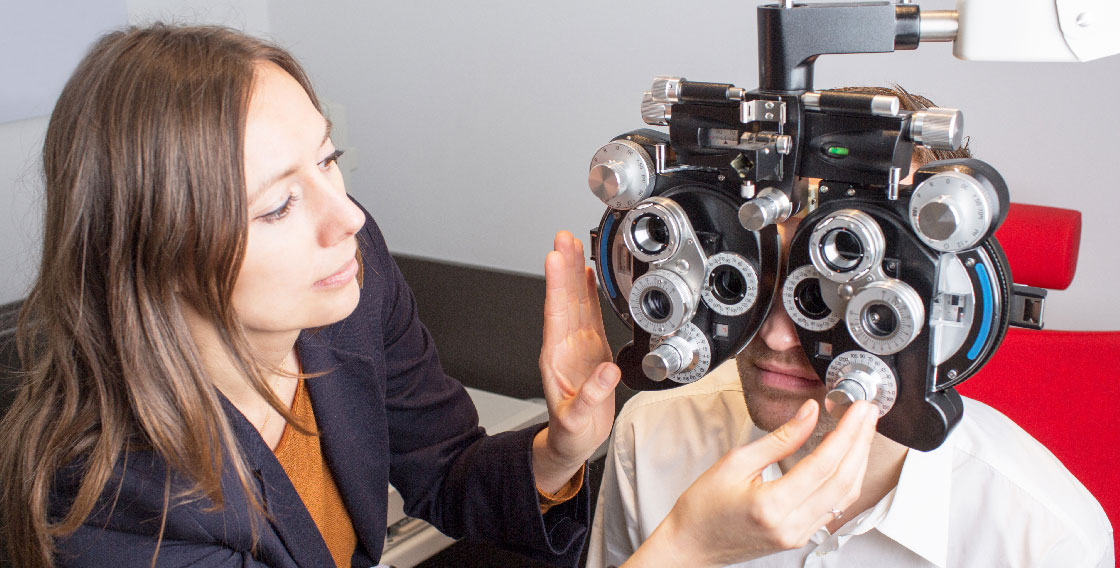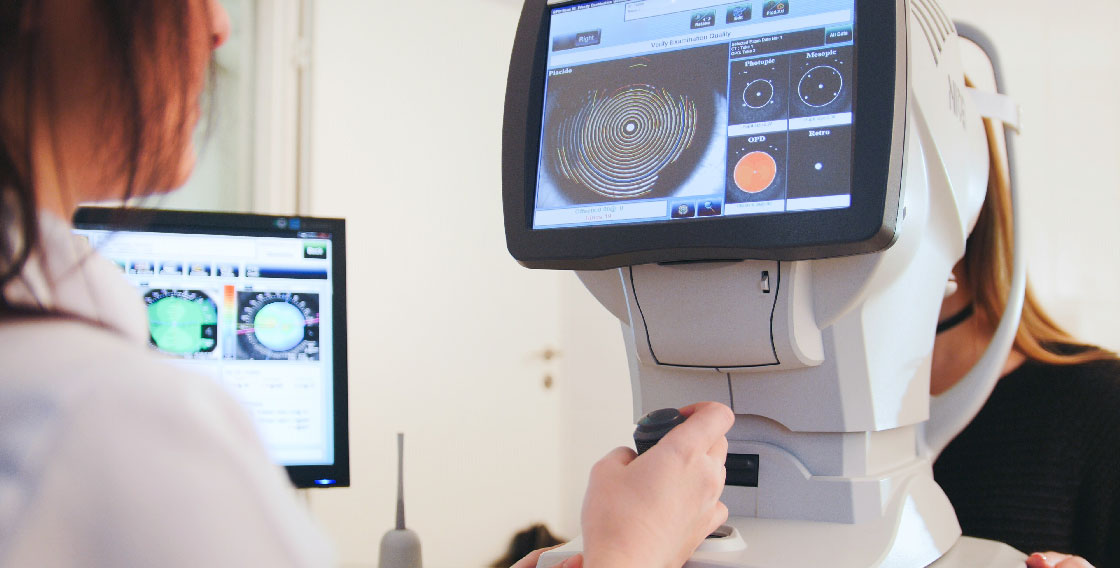5 Conditions Detected in a Comprehensive Eye Exam

If you have ever had vision problems or wear eyeglasses, you understand the importance of a regular eye exam. What most people do not realize is that an eye exam can detect many other health conditions beyond poor eyesight. Eyes are not only a window to the soul, but one to our health. Warning signs for many conditions, including diabetes and cancer can be observed through an eye exam. Because an optometrist or ophthalmologist can identify potential issues before your physician, it is essential that everyone has a comprehensive eye exam. Here are five conditions that these exams can reveal.
1. Keratoconus
Keratoconus, a progressive vision disease, can result in distorted vision. Although this condition is irreversible, there are treatments available. Depending on how severe the disorder, treatment to help correct one’s vision can vary from custom contact lenses to corneal transplants. To help prevent this disease from taking your eyesight, it is necessary to have a routine comprehensive eye exam. Specific symptoms that can indicate a keratoconus eye condition include sensitivity to glare or light, blurred vision, nearsightedness and frequent changes to your eyeglass prescription.
2. Diabetes
According to the American Diabetes Association, over 30 million Americans suffer from diabetes. Most people do not know that this disease is one of the conditions that is detected during comprehensive professional eye exams. Your optometrist or ophthalmologist can observe changes or damage to the blood vessels of the retina and they can discover diabetic retinopathy. With early detection, patients can receive proper treatment and management of the disease. This helps to avoid loss of vision and other complications.
3. Rheumatoid Arthritis
This autoimmune disease can cause chronic swelling and pain throughout the body and it affects over one million Americans. Unfortunately, there is no cure. However, with early detection, there are available treatments that can prevent the condition from affecting one’s entire body. A method for identifying autoimmune diseases is a routine comprehensive eye exam. Your eye doctor will look for indicators, such as dry eyes, inflammation of the irises, and bulging eyes. These can be signs of rheumatoid arthritis or Graves’ disease.
4. High Blood Pressure
The early discovery of hypertension can be a lifesaver. This disease contributes to loss of vision, heart attacks, and strokes. Although high blood pressure is often undiagnosed, it can be detected during a comprehensive eye exam. Looking at the back of your eyes with an indirect ophthalmoscope and a lens, your optometrist can observe signs of compression and crossing of blood vessels. This test is a quick and painless procedure that can save one’s life.
5. Cancer
We are always warned about the importance of wearing sunscreen and sunglasses. However, many are often guilty of ignoring these warnings and choose to go without when heading outdoors. While discussing cancer, people tend to focus on the skin and changes in moles, brown spots and freckles. But did you know you can have freckles in the back of your eyes? If you go without proper sunglasses, you may have them and not be aware. Although common and often benign, one of these seemingly harmless freckles can transform into a malignant melanoma of the eye. The only method for documenting any changes in the growth or shape of a blemish is with a comprehensive eye exam, which allows your optometrist or ophthalmologist to observe any noticeable freckles and monitor them.
If you have any signs or symptoms of any of these conditions or have additional questions, please contact your eye doctor to discuss your concerns and set up a comprehensive eye exam today.

